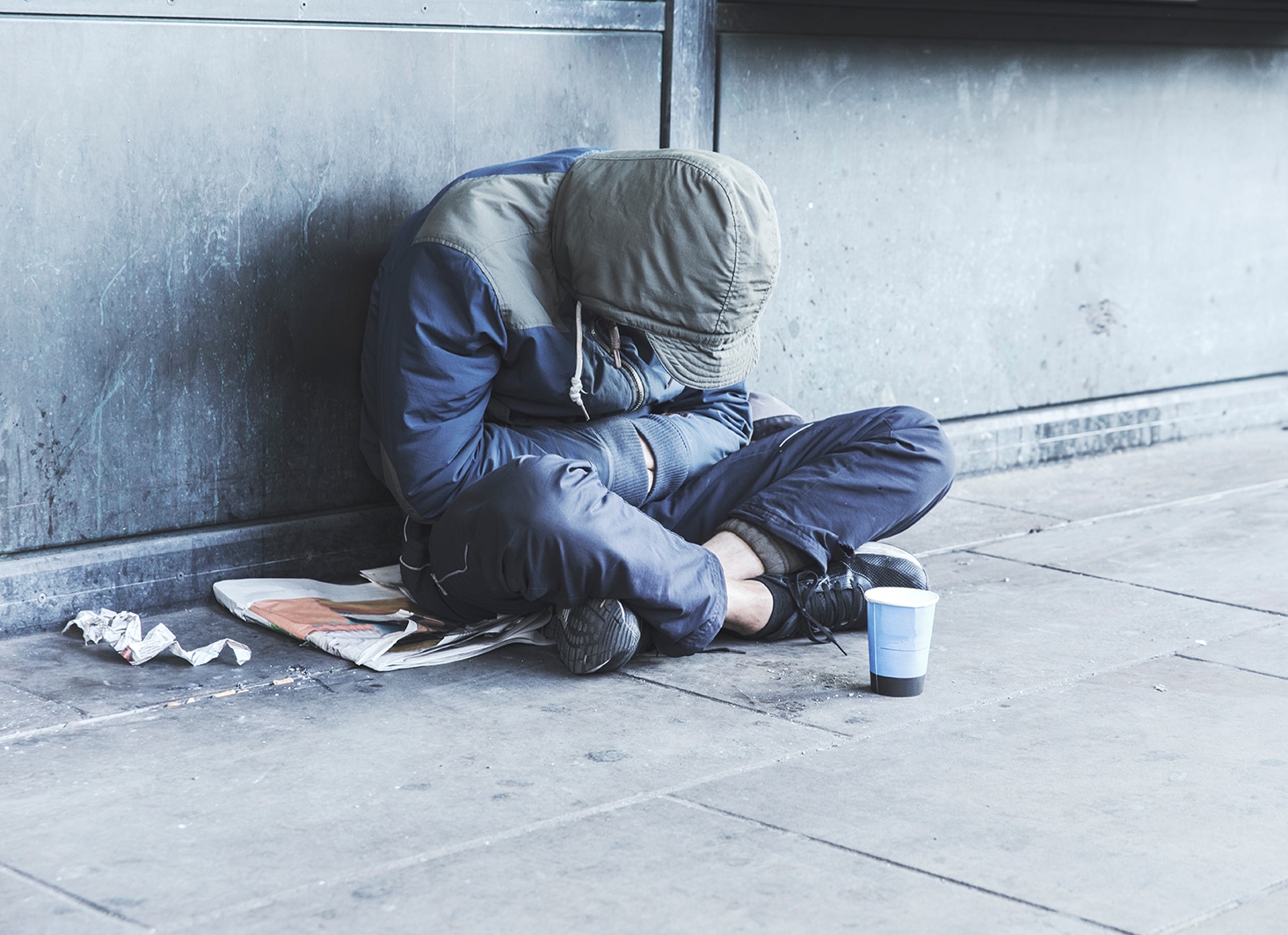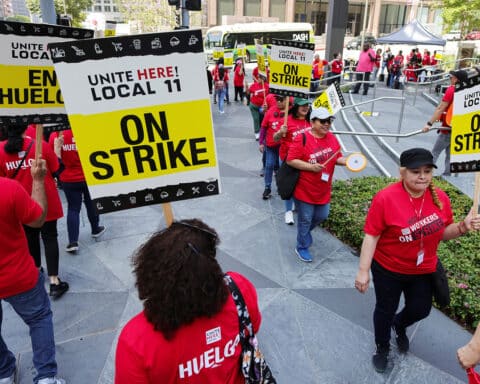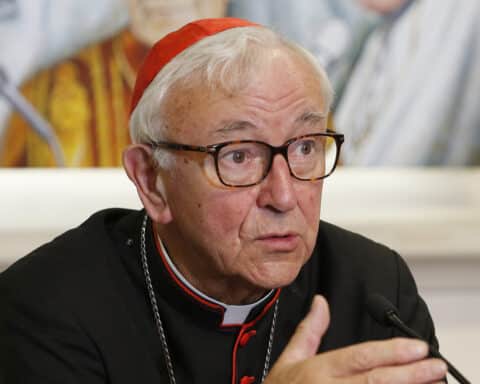(OSV News) — “The poor,” Jesus Christ says in Mark’s Gospel, “you will always have with you.”
And indeed, 2,000-plus years later, the Oxford Poverty and Development Initiative — based at England’s University of Oxford — reports “across 110 countries, 1.1 billion out of 6.1 billion people are poor; just over 18% are estimated to live in acute multidimensional poverty.”
In the United States alone, the U.S. Census Bureau logged the official 2022 poverty rate at 11.5%, a figure representing 37.9 million Americans living in poverty.
Such numbers can be truly daunting, easily leaving both dedicated advocates and empathetic onlookers overwhelmed in an attempt to identify and implement solutions.
Involved in the conversation
But what if people in poverty themselves were more involved in the conversation? That’s precisely the directive coming out of the Catholic Church’s global Synod on Synodality, which is set to resume in October 2024.
“People who suffer the many different forms of poverty, exclusion and marginalization within our unequal societies also turn to the Church in search of love, listening and accompaniment,” stated the synod’s synthesis report following its October 2023 session. “This listening allows the Church to understand the realities of poverty and marginalization, and to draw close in friendship to those who suffer … Listening to them allows the Church to understand their point of view and to place itself concretely at their side, and to be evangelized by them.”
It’s a perspective shared by Kerry Alys Robinson, president and CEO of the Catholic Charities USA network.
How to live synodally
“Pope Francis has invited us to learn how to live synodally,” said Robinson. “So we don’t think of the synod as just this one-off event, or even a process taking a number of years — but rather, it’s an invitation to all Catholics and people of goodwill to learn how to live synodally,” she reflected. “And for those of us entrusted with leadership: to learn how to lead synodally.”
According to its 2022 annual report, Catholic Charities agencies served 15 million people in 2021 through programs addressing food insecurity, affordable housing, disaster relief, health care, workforce development, immigration and more.
“We are called to encounter and accompany those who are different than us, with a preferential concern for those who are suffering, those who are vulnerable, those who have been marginalized in any way,” Robinson told OSV News. “We must listen deeply, and adopt a disposition of ‘other’ centeredness — presuming goodness in one another, and presuming that we have much to learn from one another, in the context of being in the presence of the Holy Spirit and seeing holiness in one another.”
Ministries respond
Catholic Charities, Robinson said, approaches that commitment in two ways: by responding to the unique needs of the local community, and by offering “wraparound” services providing comprehensive care for the whole person seeking assistance.
“The ministries of each agency are tailored specifically to the greatest needs in the community the agency is located and serves. A key component of this, of course, is listening to and learning from the vulnerable populations within those communities,” Robinson explained.
Strong cooperation and collaboration with local government and other service providers, she added, also is integral to that strategy.
Clients may present with one need — such as food insecurity — but other needs are almost always revealed through this kind of synodal attentiveness.
“Our agency staff and volunteers listen to the needs of each human being they encounter, and seek to identify any unmet or underlying challenges that could also be addressed,” said Robinson. “So the person who comes in for a warm meal could end up being directed to programming for job training; or addiction counseling; any number of other things.”
It is often that “any number of other things” that makes living precarious for those in poverty. When lack grows, problems multiply.
“What I would say is intrinsic to this approach is the intentional practice of really listening to, observing, entering into the life of — and ultimately, collaborating with — our clients, so we can serve them with the greatest amount of dignity and impact,” Robinson said. “Nothing about this is transactional. It’s relational … seeing the image of God in every person and doing all that we do to uphold human dignity.”
For Colin Miller, director of pastoral care and outreach at Church of the Assumption in St. Paul, Minnesota, “doing for the poor” is an unquestionably worthy endeavor. But as he wrote in a February 2023 column for The Catholic Spirit, newspaper of the Archdiocese of St. Paul and Minneapolis, “I’m convinced, ‘for’ is missing the heart of the Gospel.”
He said, “‘For’ accomplishes some good things, but it doesn’t build community, it doesn’t ask the poor what they want … ‘for’ doesn’t transform us, doesn’t allow us to see our own poverty, because the lack is always somewhere else.”
Speaking with OSV News, Miller elaborated further: “We’re not the good Samaritan — we are the man in the ditch and the good Samaritan is Christ coming to us, in the poor.
“Again, that flips our usual assumptions — and that’s hard,” he said. “If it’s the first time that someone is hearing that — and you’ve spent a lifetime thinking of yourself as a benefactor of the poor — it takes a long time to recalibrate.”
Identifying those on the margins
That recalibration, Miller believes, raises some questions — especially when identifying those on the margins.
“Where are you standing to talk about the margins?” Miller asked. “And why is a nice comfortable home in the suburbs the center? And the inner city or the dilapidated part of town, why is that the margins? When in fact, that sort of way of life is much more close to normal than our privileged way of life is. … It’s those of us who live in places that allow us to forget the poor that are on the margins of God’s vision.”
Asked about effective ministry to the poor, Miller was pragmatic.
“There’s no top-down, institutional way of doing this. And in fact, top-down, institutional ways of doing things are sometimes the problem,” he said. “You can only do this one person, one parish, one household at a time — by simply treating the people that we come upon as friends and neighbors. Neighbor means, literally, ‘the one who is near to us.’ So we’ve got to start putting ourselves in the paths of those we don’t usually come across.”
As the synthesis report indicated, that may require some social stretching.
“There is a constant risk, one to be carefully avoided, of viewing those living in poverty in terms of ‘them’ and ‘us,’ as ‘objects’ of the Church’s charity,” the report cautions. “Putting those who experience poverty at the center and learning from them is something the Church must do more and more.”
Proposals for churches
But the synod’s report also raises proposals local churches can put into action. Among those proposals are integrating this “listening and accompaniment” into Christian communities “ordinary pastoral planning and operational structuring … making full use of spiritual accompaniment”; connecting the ongoing work of Caritas (Catholic Charities) and other institutions or associations with local church communities “in a more integral way” so it can “be seen as part of the life of the whole community, not a delegated task”; and providing formation in listening and accompaniment so the church can support and sustain this commitment.
In the Diocese of San Diego, the synodal process has included not simply parishioners, but also people who are homeless and incarcerated. Robert Ehnow, director of the diocese’s Office for Life, Peace and Justice, told OSV News the directive received by diocesan staff from Cardinal Robert W. McElroy was “to include those who are living, certainly on the economic margins, but also any kind of margin — whether it’s a psychological margin, or whatever it happens to be — where they don’t feel like they’re fully integrated in our communities.”
That’s a challenge, Ehnow explained.
“Realistically, there’s times — because of mental illness, substance abuse or other kinds of trauma that they’ve either experienced or currently experience — it’s hard for folks on the margins to articulate exactly what they need,” he said.
A challenge, but not impossible.
“What it means is accompaniment looks a little bit different. Even though we’re all community, we also are individuals,” Ehnow said, “and each person, even people that are living on the margins, have their own needs that may be unique to only them.
“We’ve always got to keep that in mind,” he said. “More than just ‘doing for the poor,’ we want to be accompanying the poor and we want to be in solidarity with them — because it makes us a richer Church. We are better apostles and better disciples when we’re in solidarity with the poor.”





